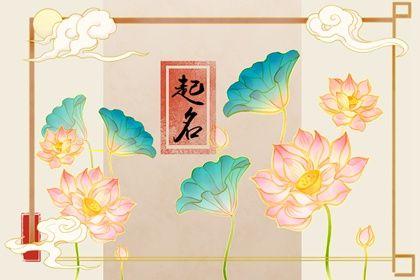怎样给无毒的事物起一个绝佳的名字
- 作者: 刘星晚
- 来源: 投稿
- 2024-07-26
一、怎样给无毒的事物起一个绝佳的名字
1. 强调其自然或纯净的本质
纯净天然
无害
无毒
安全
2. 使用描述性术语
清澈
透明
无色
无味
无臭
3. 借鉴自然元素
水
空气
阳光
植物
动物
4. 使用隐喻或比喻
天使之泪
生命之泉
纯洁之光
和平之息
宁静之声
5. 创造一个新词
埃塞尔(来自希腊语“纯净”)
诺克斯(来自拉丁语“无害”)
塞雷娜(来自拉丁语“平静”)
维塔(来自拉丁语“生命”)
泽菲尔(来自希腊语“西风”)
6. 使用缩写或首字母缩略词
NTX(无毒)PNT(纯净无毒)
SNT(安全无毒)
7. 考虑目标受众
对于儿童:使用有趣或奇特的名称
对于科学家:使用技术或描述性名称
对于消费者:使用易于理解和记忆的名称
8. 避免使用负面或误导性术语
毒性有害
危险
污染
腐蚀性
9. 进行彻底的研究
确保名称未被其他产品使用
检查名称是否在目标市场中具有积极的含义
考虑名称的商标潜力10. 保持简洁和难忘
选择一个简短、易于发音和记忆的名称
避免使用冗长的或难以理解的名称
二、怎样给无毒的事物起一个绝佳的名字英语
How to Name a Non-Toxic Product
1. Highlight the Benefits:
Emphasize the product's safety and purity, such as "Pure & Gentle" or "Safe for Sensitive Skin."
Use terms that convey natural and wholesome qualities, such as "Organic," "Plant-Based," or "Eco-Friendly."
2. Use Descriptive Language:
Describe the product's texture, scent, or purpose, such as "Silky Smooth Lotion" or "Invigorating Body Wash."
Use evocative words that appeal to the senses, such as "Soothing," "Refreshing," or "Nourishing."
3. Consider the Target Audience:
Choose a name that resonates with your intended customers.
Use language that is appropriate for their age, lifestyle, and values.
For example, a name like "Baby's First Bath" would be suitable for parents of young children.
4. Keep it Simple and Memorable:
Avoid long or complex names that are difficult to remember.
Choose a name that is easy to pronounce and spell.
Consider using a catchy phrase or alliteration, such as "Pure & Pristine" or "Gentle & Green."
5. Avoid Misleading or Exaggerated Claims:
Be honest and transparent about the product's ingredients and benefits.
Avoid using terms like "miracle" or "cure-all" that could raise unrealistic expectations.
6. Consider the Legal Implications:
Ensure that the name does not infringe on any trademarks or copyrights.
Avoid using generic terms that could be used by competitors, such as "Natural Soap" or "Organic Shampoo."
7. Test the Name:
Get feedback from potential customers or focus groups to see if the name is well-received.
Consider conducting a trademark search to ensure the name is unique.
Examples of Non-Toxic Product Names:
Pure & Gentle Baby Wash
Soothing Aloe Vera Lotion
Plant-Based Body Butter
Eco-Friendly Dish Soap
Refreshing Citrus Hand Sanitizer

三、怎样给无毒的事物起一个绝佳的名字呢
考虑其用途或功能:净化剂:洁净、清新、净化
除臭剂:清新、芳香、除臭
清洁剂:闪亮、洁净、无污垢
消毒剂:安全、卫生、无菌
强调其无毒性:无毒:安全、无害、无毒
环保:绿色、可持续、生态友好
天然:纯净、植物性、有机
温和:不刺激、不刺激、不伤害
使用描述性词语:清新的:薄荷、柑橘、花香
舒缓的:薰衣草、洋甘菊、芦荟
提神的:柠檬、薄荷、桉树
温暖的:香草、肉桂、姜
创造一个独特而难忘的名字:
Zenith:最高点,暗示无毒性的巅峰
Aura:保护层,暗示无毒性的保护
Elysium:天堂,暗示无毒性的天堂
Sanctuary:避难所,暗示无毒性的安全空间
其他提示:保持简洁明了。
避免使用技术术语或晦涩难懂的单词。
考虑目标受众。进行市场调查以确保名称没有被使用。
确保名称易于发音和记忆。
四、举例说明用无毒无害的物质取代
清洁用品传统清洁剂:含氯漂白剂、氨水
无毒替代品:白醋、小苏打、柠檬汁
个人护理用品传统洗发水:含硫酸盐、对羟基苯甲酸酯
无毒替代品:无硫酸盐洗发水、天然洗发皂
化妆品传统口红:含铅、邻苯二甲酸盐
无毒替代品:天然口红、矿物口红
食品传统人造黄油:含反式脂肪
无毒替代品:橄榄油、鳄梨油
包装材料传统塑料包装:含双酚 A (BPA)
无毒替代品:玻璃、纸、可生物降解塑料
建筑材料传统油漆:含挥发性有机化合物 (VOC)
无毒替代品:低 VOC 油漆、天然涂料
纺织品传统染料:含偶氮染料、重金属
无毒替代品:天然染料、有机染料
其他传统杀虫剂:含神经毒素
无毒替代品:精油、硼砂、小苏打




